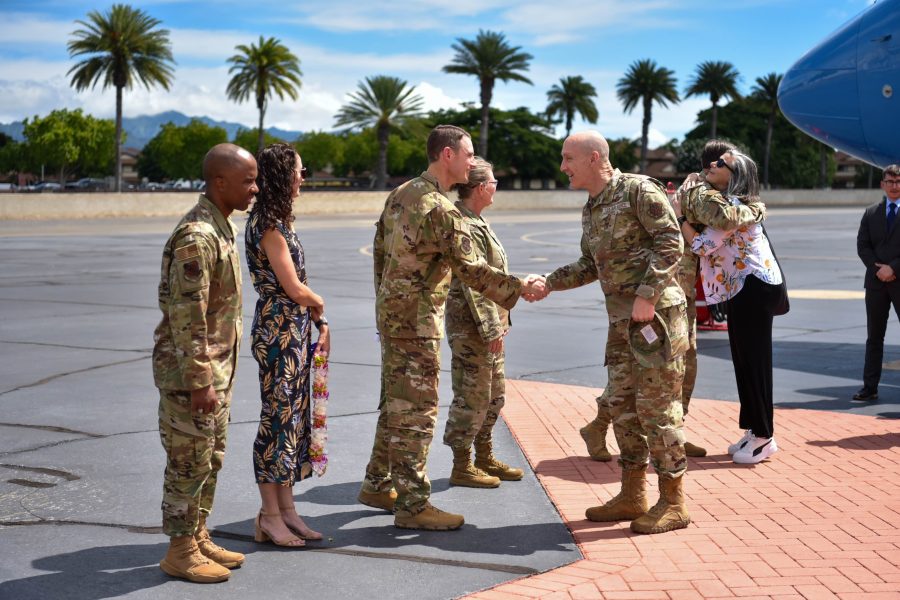As the U.S. Air Force leans into its reforms to better deter the People’s Republic of China, the service’s top officer is pitching his ideas at a meeting with his Asian counterparts at the Air Force Forum in Tokyo, which runs Oct. 14-16.
Chief of Staff Gen. David W. Allvin made the presentation during a weeklong tour of the Pacific with Chief Master Sergeant of the Air Force David A. Flosi, which has already included stops in California, Hawaii, and Guam.
“If I look at the future of conflict, one of the attributes I am focused on is speed—the speed of recognition, the speed of decisions, the speed of action,” Allvin said during a conference panel, underscoring a theme he has emphasized during his first year as CSAF.
Allvin has often framed speed as a quality the U.S. Air Force needs to emphasize in policy-making, acquisition, and military operations. The idea is to empower Airmen to react quickly on their own rather than waiting for instruction from above.
The Tokyo meeting of air chiefs drew more than 20 senior leaders from Pacific nations, Canada, and France, a European nation and U.S. ally that has expressed a particular desire to operate in the region. Pacific Air Forces commander Gen. Kevin B. Schneider is also attending the session.
Air Force leaders say other nations are increasingly aligned with Washington in light of China’s military buildup and persistent threats from North Korea, whose nuclear capabilities are expanding. Allvin referred to alliances as the “price of admission” to tackling future threats.
“The ability for all of us to see and recognize the environment—to be able to work with each other and have the dialogue at the speed of the battle and operate as one—that will be the key,” Allvin said. “We need true interoperability. That requires the will of all the nations here to work out systems interoperability, remove policy barriers, and expand information exchanges to achieve a common operating picture so we can all respond at speed.”
Japan, which is hosting the conference, is one ally which is making tangible progress toward augmenting its military capabilities. Washington and Tokyo have agreed to elevate U.S. Forces Japan to a major command that will initially be led by a three-star general and will work more closely with Japan’s armed forces.
Allvin held a bilateral meeting with the new Japanese defense minister Gen Nakatani. Secretary of Defense Lloyd J. Austin III is scheduled to meet with Nakatani on the sidelines of the meeting of G7 defense ministers in Italy later this week.
Japan is part of the so-called First Island Chain off the coast of mainland Asia, which also includes Taiwan and stretches south to the Philippines. It houses key American air bases such as Kadena Air Base on Okinawa, where U.S. fighters are stationed.
The U.S. is still heavily reliant on bases on its own territory to protect power in the Pacific, specifically Guam, the U.S. territory in the western Pacific that houses Anderson Air Force Base. That base, which Allvin and Flosi visited before traveling to Tokyo, is home to the Air Force’s largest conventional war reserve materiel stockpile and serves as a staging area for Air Force bombers and other American military aircraft operating in the region.
“The logistics capabilities of Andersen will keep U.S. and joint airpower in the fight, showcasing our deterrence efforts and ability to protect the Indo-Pacific,” Brig. Gen. Thomas Palenske, 36th Wing commander, said during the visit, according to an Air Force release.
The service says Allvin and Flosi will make additional stops in the region during their trip, which concludes Oct. 18.
